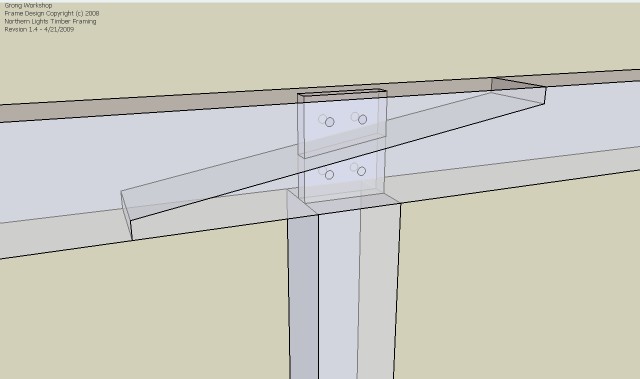Posted By: Jon Senior
TFRubies scarf joint - 02/12/12 10:00 PM
OK. I'm new to TFRubies (and toying with the idea of buying the book... I just try to avoid having stuff shipped from the US to Europe, especially paper!) and while it's mostly making sense and working out, my first attempt at a scarf joint is failing quite spectacularly. I've put a copy on one of my many sites
(http://hoovesofdestiny.co.uk/Beam-200x250.skp)
I'm fairly sure that I've done everything right. Right clicking on the joint part lists it as "TF ID: Joint", but it doesn't appear to be cutting completely as you can see if you put it up against another copy of itself.
Any suggestions? Do I need to make a "shoulder" for the joint in order for it to be complete?
Thanks in advance for any help provided. I'm looking forward to transferring my design from AC3D (which was OK for visualising it, but rubbish for problem-solving).
(http://hoovesofdestiny.co.uk/Beam-200x250.skp)
I'm fairly sure that I've done everything right. Right clicking on the joint part lists it as "TF ID: Joint", but it doesn't appear to be cutting completely as you can see if you put it up against another copy of itself.
Any suggestions? Do I need to make a "shoulder" for the joint in order for it to be complete?
Thanks in advance for any help provided. I'm looking forward to transferring my design from AC3D (which was OK for visualising it, but rubbish for problem-solving).



